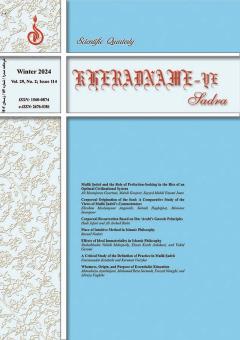The notion of immutable archetypes is one of the most important pillars of Ibn ‘Arabī’s ontology, and its acceptance greatly influences one’s view of the problem of God’s knowledge. In fact, God’s knowledge prior to the creation of existents is an important challenge th
More
The notion of immutable archetypes is one of the most important pillars of Ibn ‘Arabī’s ontology, and its acceptance greatly influences one’s view of the problem of God’s knowledge. In fact, God’s knowledge prior to the creation of existents is an important challenge that various epistemological, kalāmi, philosophical, and gnostic systems have tried to analyze and explain each in its own way. The Mu‘tazilites and Ibn ‘Arabī have tried to solve this problem by accepting the existence of pre-eternal archetypes. However, some thinkers, such as Mullā Ṣadrā, have disagreed with Ibn ‘Arabī’s view. Mullā Ṣadrā has harshly criticized the structure of immutable archetypes in his works. Nevertheless, through a more detailed investigation and based on a comparative approach, it can be concluded that Mullā Ṣadrā has tried to solve the problems that are in contrast to his philosophical principles through presenting a new view of the problem of archetypes and providing a new interpretation of Ibn ‘Arabī’s standpoint. This study aims to demonstrate that Mullā Ṣadrā agrees with Ibn ‘Arabī’s view of immutable archetypes but differentiates between his view and the idea of the subsistence of non-existents, which is favored by the Mu‘tazilites. He also believes that the first view is in conformity with his own unveilings and intuitions.
Manuscript profile


